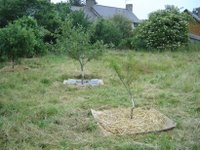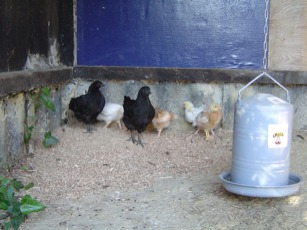

Fruit trees – part 2: a couple of years ago, I did a two-day course, “Renovation Pruning of Old Fruit Trees”, organised by
Brighton Permaculture Trust. Run by Bryn Thomas, it was very practical and one of the best courses I’ve ever been on. The other source of wisdom for today’s blog is the Royal Horticultural Society’s book,
Pruning and Training, by Brickell and Joyce. It’s full of good advice but I find the diagrams of where to cut just a bit too frustrating, trying to relate the twigs and branches I have to the picture in the book!
Plums must be pruned in the spring or summer, depending on age, as disease can enter through the wounds if pruned in the winter, unlike apples, for example. This tree was in a right old state. The reasons to prune include: to reduce disease, improve health, re-invigorate tree, encourage fruiting (less fruit but better quality) to control height and shape, letting air and light in.
Pruning should remove damaged, diseased and dead wood, twiggy and unproductive growth and prevent crossing branches. The approach is slowly, slowly: assessing, cutting, stand back and assess again, and prioritise, as you mustn’t take off more than 30% of living wood (some advice quotes 25%). I’m a beginner, and only pruning a few trees, so I make a pile of dead wood (which doesn’t count) and another pile of live prunings and take a digital photo of the before (and after) to try to monitor what I’ve removed. BEWARE: it’s all too easy to cut too much as one becomes absorbed in the process. In fact, I find it very meditative due to the high level of concentration involved whilst stuck in a field with only birdsong for company.
I may have taken off a little too much but it is looking a lot better. I shall mulch and sticky bandage and keep a close eye on it during the following months. Due to the rot damage to the trunk, it may not survive and need replacing next year; I’ll let you know!
PS : don't forget to clean and disinfect your tools afterwards, so as not to spread disease when pruning other trees.










